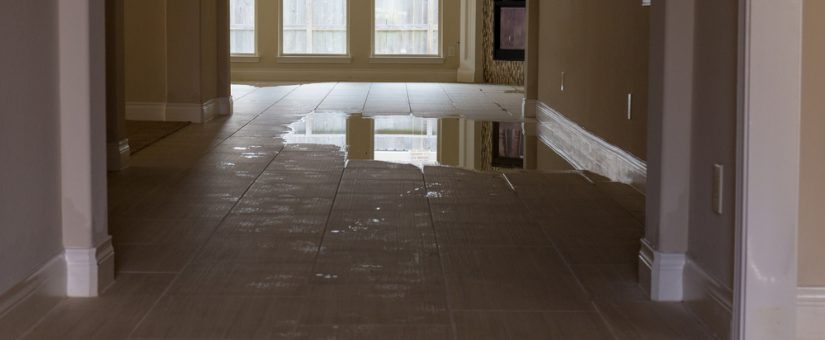We have found this article about How to detect water leaks in your home down the page on the net and figured it made sense to relate it with you on this site.

Leakages not only cause waste of water however can additionally create unnecessary damage to your home and also advertise undesirable natural growth. By understanding as well as looking for everyday situations that trigger leaks, you can protect your home from future leaks and also unneeded damage.
Encroaching origins
A lot of water leaks begin outside the house rather than inside it. You might see wet spots or sinkholes in your backyard, and that could imply that tree origins are getting into water lines creating water to permeate out.
Corroded water supply
As time goes by, your plumbing system ages and rust such as rust might begin eating away the pipelines. This may be the reason for staining or bending on your water pipes. This requires an examination with your plumber instantly. Think about replacing the pipelines since they are at a higher threat of rust than the more recent models if our plumbing system is old.
Faulty Pipe Joints
The factor at which your pipelines attach is regularly the weakest link in the waterline. Pipeline joints can wear away in time, causing water leakages. The majority of pipeline joints are not conveniently noticeable. If you have loud pipelines that make ticking or banging sounds, specifically when the warm water is switched on, your pipe joints are possibly under a lot of pressure. It is recommended to have your plumber check your system annually.
Instant temperature level adjustments.
Extreme temperature changes in our pipelines can trigger them to expand and acquire unexpectedly. This growth and also contraction may trigger splits in the pipes, particularly if the temperature level are listed below cold.
Poor Water Connectors
Sometimes, a leakage can be brought on by loosened hose pipes and pipelines that provide your devices. More often than not, moving is what causes the loosened water Links. You might discover when it comes to a cleaning device, a hose pipe may spring a leak due to drinking during the spin cycle. In case of a water links leakage, you might see water running directly from the supply line or puddles around your devices.
Clogged Drains
Clogged drains could be irritating as well as inconveniencing, yet they can often wind up triggering an overflow causing rupture pipes. Maintain removing any type of materials that might decrease your drains pipes that could clog them to avoid such hassles.
All the above are reasons for leakages yet not all water leaks result from plumbing leakages; some leakages might originate from roof covering leakages. All leakages need to be fixed instantly to stay clear of water damage.
Leaks not only create waste of water but can additionally cause unneeded damages to your house as well as promote undesirable organic development. By understanding and also looking for everyday situations that cause leakages, you can protect your house from future leakages as well as unneeded damages. Today, we will certainly look at six leakage triggers that may be creating your pipelines to drip.
At times, a leak can be created by loosened hose pipes as well as pipes that supply your home appliances. In instance of a water connections leakage, you may discover water running directly from the supply line or pools around your appliances.
How To Check For Water Leak In Your Home
How To Check for Leaks
The average household's leaks can account for nearly 10,000 gallons of water wasted every year and ten percent of homes have leaks that waste 90 gallons or more per day. Common types of leaks found in the home are worn toilet flappers, dripping faucets, and other leaking valves. These types of leaks are often easy to fix, requiring only a few tools and hardware that can pay for themselves in water savings. Fixing easily corrected household water leaks can save homeowners about 10 percent on their water bills.
To check for leaks in your home, you first need to determine whether you're wasting water and then identify the source of the leak. Here are some tips for finding leaks:
Take a look at your water usage during a colder month, such as January or February. If a family of four exceeds 12,000 gallons per month, there are serious leaks.
Check your water meter before and after a two-hour period when no water is being used. If the meter changes at all, you probably have a leak.
Identify toilet leaks by placing a drop of food coloring in the toilet tank. If any color shows up in the bowl after 10 minutes, you have a leak. (Be sure to flush immediately after the experiment to avoid staining the tank.)
Examine faucet gaskets and pipe fittings for any water on the outside of the pipe to check for surface leaks.
Undetected water leaks can happen without the home or business owner even realizing. If you suspect a water leak, but not able to find the source. It is time to contact a professional water leak detection service, The Leak Doctor.
How To Find a Water Leak In Your Home
https://www.leakdoctor.com/blog/How-To-Check-For-Water-Leak-In-Your-Home_AE197.html

We had been made aware of that report on How to detect water leaks in your home through a friend on a different web blog. Enjoyed our piece? Please share it. Help somebody else find it. I appreciate reading our article about How to detect water leaks in your home.
Dial instantly!